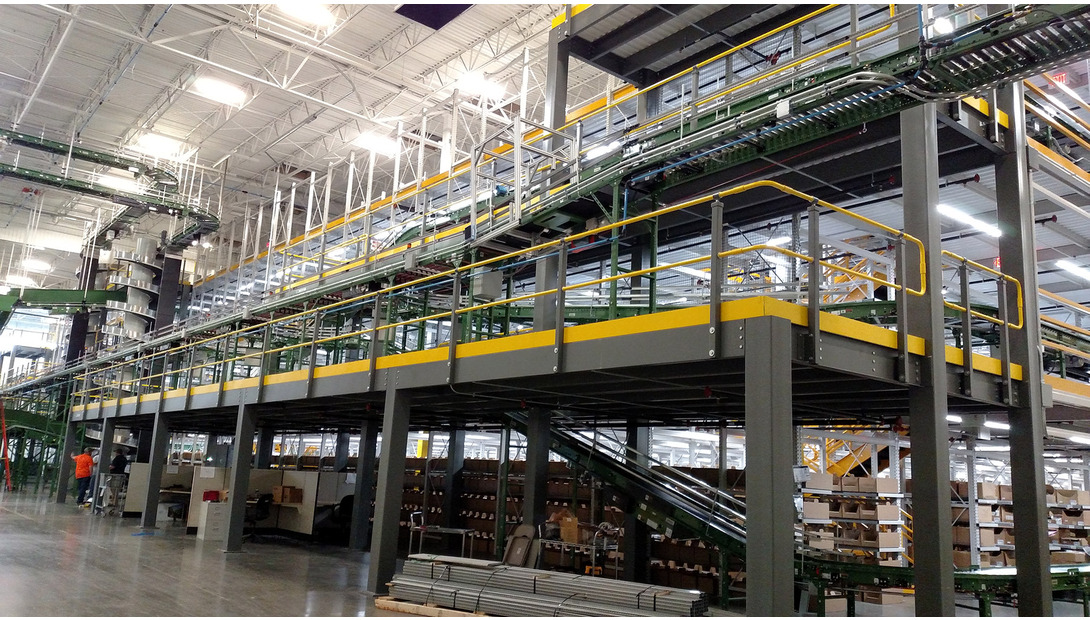This article originally appeared in the May/June, 2018 issue of PARCEL.
The first full day of the 2017 PARCEL Forum in Nashville had a special highlight during the keynote luncheon. Since 2015, we have conducted a search for the game-changer of the year in the months leading up to our fall conference. We look for those organizations who have identified a major hurdle or obstacle within their small-parcel operation and sought out innovative solutions. Reviewing the submissions is always an enjoyable experience, since it is so gratifying to see how many forward-thinking folks we have in our industry! But, as with most things, there can be only one winner, and in 2017, it was Gap Inc. Their dedication to seeking out innovative solutions to optimizing their growing e-commerce operation made them an excellent choice as our 2017 winner.
The Problem
Like many other retailers, the Gap Inc. distribution center located in Gallatin, TN was facing an explosive growth of e-commerce orders. While this means good things for the bottom line, their current setup was not equipped to handle the influx. “With the emergence of e-commerce, Gap Inc., [had to] transition its distribution centers from a retail-central shipping network to one that has to manage retail (store replenishment) orders as well as e-commerce (direct-to-consumer) orders,” shares Kevin Releford, Senior Director at the Gallatin campus. “This transition required the company to convert an existing building in Gallatin that previously filled orders for retail stores to one that would fill orders directly to the consumer. The facility needed to be redesigned with a different configuration and infrastructure than it had before in order to handle e-commerce orders with the speed and accuracy that online customers have come to expect.”
Reconfiguring an existing building to handle a large increase in orders is certainly no easy task, especially when it is triggered by an organizational crisis. In August of 2016, the company experienced a fire in its Fishkill, NY distribution center, just prior to peak season. While no company wants to experience a disaster like this, there was, luckily, a silver lining. This fire activated the company’s business continuity plans, and within days, executives had optimized the US distribution network, allowing them to divert resources and product to other DCs, including in Gallatin. Gap Inc. was able to leverage its existing facilities to meet peak retail and online demands through implementation of innovative new processes and technology.
“We were overwhelmed by the outpouring of support from others in our industry to offer help and guidance after our Fishkill distribution center was impacted by the fire,” says Releford. “Our supply chain organization reviewed multiple options [regarding the best path for meeting the increase in orders] but ultimately decided that converting our existing facilities was the best approach, both for our employees and in support of our long-term business.”
And while the higher-ups at Gap Inc. agreed with this assessment, these changes still required a shift in mindset. “We didn’t feel any pushback [from executives], but it was a change in how we work. When you are fulfilling ecommerce orders, the shipments go straight to a customer and have a direct impact on their experience,” explains Releford. “That message was continually re-enforced with our teams and brought an even stronger focus on accuracy and quality in all our operations.”
The Process
As any logistics professional may guess, even when a redesign is approved, the actual implementation can be daunting. For Gap Inc., the redesign included adding a larger pick module that could handle three times as many product stock keeping units (SKUs), which allowed them to service more volume and brands. They also transitioned from a legacy warehouse management system (WMS) to a Manhattan warehouse management for open systems (WMoS), giving them more functionality. Executives also approved the implementation of a new warehouse execution system (WES) by VARGO to increase efficiency and processing speed. The automatic storage and retrieval system further drove increased efficiency with the replenishment operation. The redesign was completed in only eight months – six months of which was focused on physical changes to the site to create a new online facility.
This isn’t to say it was all smooth sailing, of course. “In expanding our Gallatin facility to service online [orders] as well, we had to move to a more leveraged, highly flexible model,” Releford explains. “This included learning a new warehouse management system, continuous fulfillment system, and warehouse execution system to accommodate the shift. In just three months, we had to start and ramp up these systems to be fully operational before our peak season. This was our biggest challenge to ensure everyone was comfortable on the new systems and we were working efficiently to accommodate our ‘super peak’ volumes.”
The Results
This automation has paid off; the company went from shipping an average of 290,000 packages per month in 2016 to an expected 1.5 million packages per month this year. Executives also estimate that these improvements translate to a 45% increase in productivity in terms of packages shipped per hour. And nowhere are these gains more evident than in the peak season forecast; Releford estimates that these improvements will allow the company to go from processing 50,000 units a day (the average during peak season two years ago) to processing 500,000 units a day in the same physical building much more efficiently.
This efficient handling of growth is impressive, especially when one considers that managing an e-commerce operation and a retail operation come with different requirements and challenges. “Store replenishment and e-commerce require very different demands of a fulfillment operation when it comes to speed, accuracy, and cost/labor content,” Releford explains. “When considering store replenishment, we measure success through store fulfillment service and cost, leveraging the natural efficiency you get in processing large numbers of units in a given store delivery carton and large carton deliveries to a given store. E-commerce requires more individual unit handling throughout the process; [these orders] are packaged in unit/small batch sizes and delivered to the end customer with greater speed and flawless accuracy.” The redesign of the Gallatin building allowed the DC to leverage innovative new processes, staffing solutions, systems, and automation to execute at scale, helping them succeed at both the store and e-commerce level.
Furthermore, executives faced unique challenges with a Cross-Channel Logistics Optimization (CCLO) facility. Making this shift required different staffing needs during peak to accommodate higher volumes. When servicing the retail stores, there is a steadier uptick in demand that is easier to plan for, but with online, the increase in demand is much steeper and more dramatic to accommodate. “Effectively leveraging our resources across retail and online requires expert planning and work flow management,” Releford notes. “We strive every day to strike the right balance ensuring we have the required staffing and that they are optimally deployed to deliver the needed capacity, speed, and flexibility.”
Looking Ahead
E-commerce continues to command a bigger percentage of purchases each year, and it’s no different at Gap Inc.. But Releford and his team welcome this growth and treat it as an opportunity, not a challenge. “We are constantly learning new ways to efficiently grow and scale our business to meet the growing customer demand,” notes Releford. “We need to ensure the systems we use are easy to learn, easy to execute, and that our team members know what they need to do to be successful. As we grow, we want to continue to build an engaged workforce that is happy and excited to come to work every day and help us meet our goals to deliver amazing experiences and product to customers all over the country.”
Image captions:
Photo 1: Joel Dunkel (L), President of EventEvolution, creator of the PARCEL Forum, poses with Kevin Releford, Senior Director at the Gallatin campus, after the awards ceremony.
Photo 2: A look inside the Gallatin distribution center.













![GettyImages-1288486122-[Converted]](https://cms-static.wehaacdn.com/parcelindustry-com/images/GettyImages-1288486122--Converted-.1781.widea.0.jpg)


